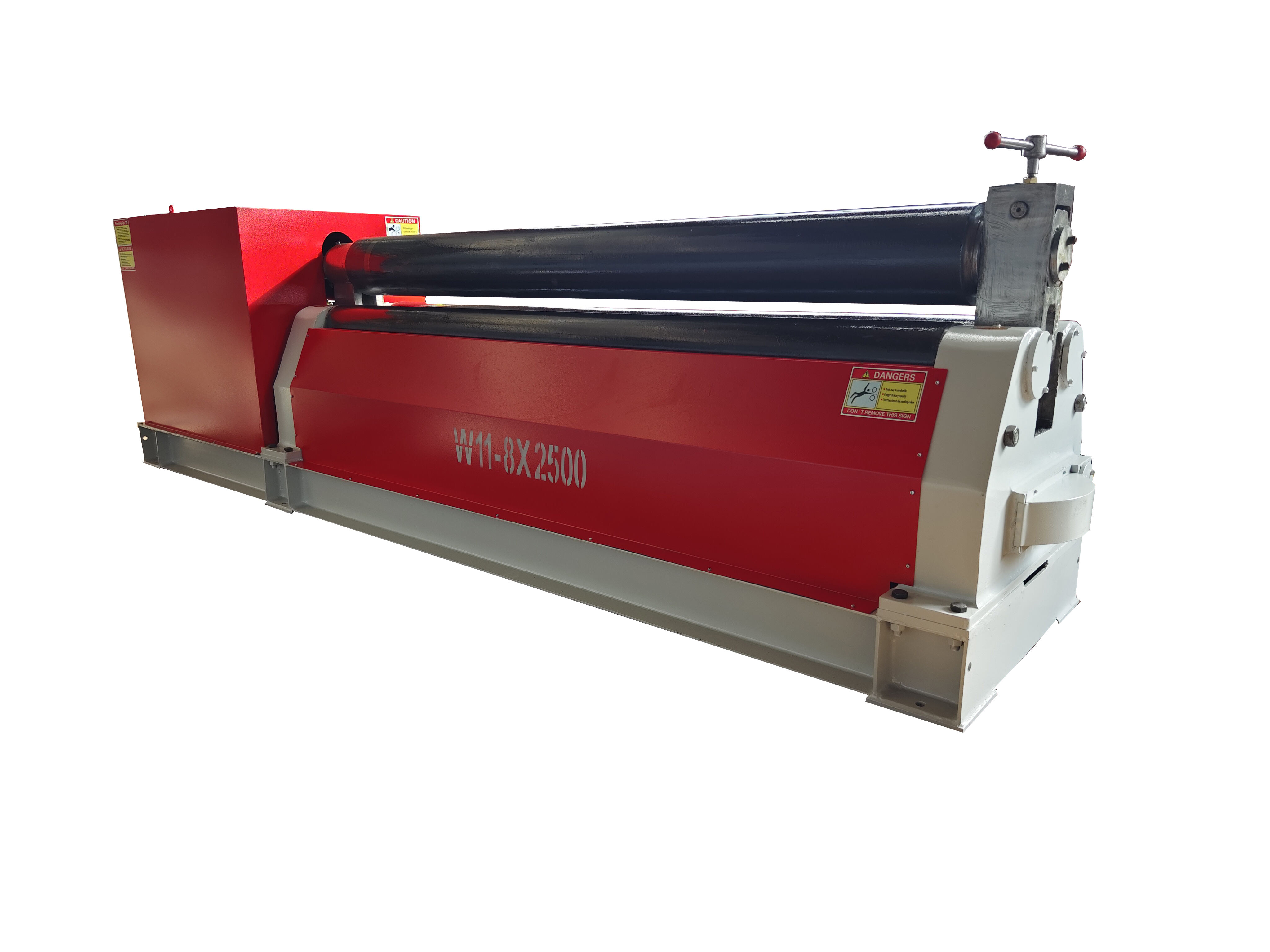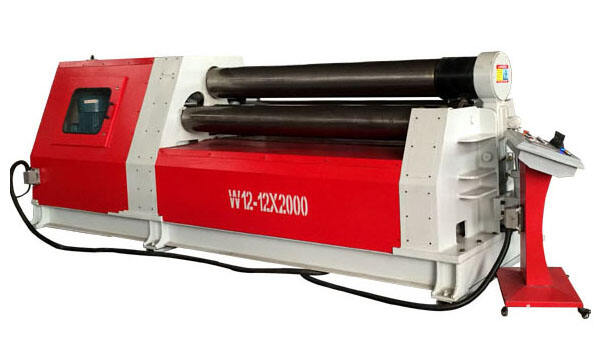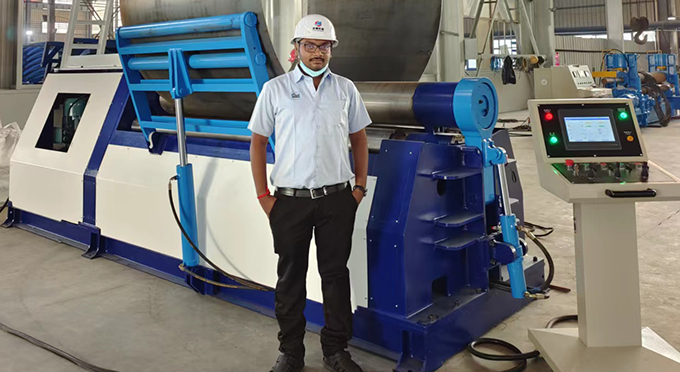Understanding Plate Bending Rolls and Their Mechanics
What Are Plate Bending Rolls?
What Are Plate Bending Rolls? Plate bending rolls (or rolling machines) are among the most critical pieces of equipment for bending steel plate into a specific radius or for an angle. This equipment is the heart-family of metal shaping which allows the production of arcs, cylinders, and cones. Aerospace, automobile and building structures are just a few of the industries that rely heavily on plate bending rolls to ensure that the strongest materials are used to provide safe and durable components. So in aerospace these machines help mold parts of airplanes and in construction they are used to construct all kinds of architectural elements. According to market study, the demand of plate bending roll is increasing, and sale of plate bending roll is on the rise from manufacturing industry to cope up with the production demands, mainly from that of metal sector.
Core Components: Rolls, Hydraulics, and CNC Integration
Plate bending rolls' main parts are upper and lower rolls, side rolls and a set of assistant devices. All rolls are essential; the top and bottom would maintain the metal plate and the side rolls would apply sufficient pressure to bend the plate. Part 1: Hydraulics Hydraulics are key to controlling bend process, maintaining repeatability & reducing operator error. Such systems provide high pressure actuation so that bending parameters can be accurately set-up even if the plate thicknesses differ. CNC (Computer Numeric Control) automation is essential to improve the accuracy and repeatability of bends. With CNC, manufacturers can program certain bending sequences, and its accuracy is incredible. Some companies such as Nantong Yeshun Machinery Manufacture Co., Ltd. have realized perfect application of CNC, manufacturing products that reach international advanced level.
Types of Plate Bending Machines Revolutionizing the Industry
Three-Roll vs. Four-Roll Systems
In the domain of plate rolling machines the mechanical and efficiency difference between a 3-rolls and a 4-rolls machine is the twist on the bending side. Three-roll plate rolling machines perform work along both lower rollers, opting for certain jobs such as precision work can be more complex to set-up. 4 Roll Bending Machines – They are available with very precise pre-pinching and easier operation as they are capable of holding the material in a secure manner. This characteristic demands a more orderly layout and decreases material reflow that allows for better control and efficiency of bending. User options are largely dependent on wide ranging project size and budget; small operators will opt for the versatile three-roll systems, while large industries require the accuracy of four-roll systems.
Heavy-Duty Hydraulic Plate Rolling Solutions
High strength rolling machines are very important for rolling heavy metal plate or high strength metal plate, providing guarantee for high grade and high precision products. These machines can exert enormous forces, ensuring optimum control at the time of bending, and they find their applications in such industries as shipbuilding, construction etc. The hydraulic technology has the benefit of even pressure distribution over the bending length which really minimizes the potential of inferior products. According to the latest statistics, the sales of heavy-duty plate bending machines keep increasing all the time, which shows that its significance has been highly-enlightened in expanding industrial capacities. Their rise in the market speaks for their help in transforming heavy metal sheets into accurate shapes, emphasizing their significance in modern metal-working jobs.
Key Benefits Transforming Metal Fabrication
Precision Bending for Complex Shapes
Today's plate bending rolls are hosted in the fabrication industry with accuracy production that is necessary in making complex shapes. These devices are capable of precisely shaping raw materials in the form of individual metal sheets, thereby coining highly-complex workpieces, and have played a crucial role in the development of modern products in a range of industries. For example, the aerospace and automotive industries are highly dependant on precision bending to form the intricate features needed for their products. Better accuracy in bending improvement in material utilization, thus waste and scrap are decreased in production process. An article on theJournal of Manufacturing Processes discusses how precision bending technologies have revolutionized productivity in these sectors.
Versatility in Material and Thickness Handling
Another game changing advantage of plate rolling equipment is the ability to handle a variety of metals and thicknesses. These units can process material such as steel, aluminium, stainless steel, and more to meet the needs of different applications with ease, specifically from light to heavy-duty applications. This flexibility makes these machines extremely productive as they can process subdued as well as abrasive material with good wear resistance with ease. This is reflected in the numbers of the fact on orders volume and in the satisfaction of the client who leverage these machines of versatile bending.. This flexibility is necessary to accommodate the diverse requirements of the modern industrial arenas.
Cost Efficiency and Reduced Production Time
Advanced plate bending machines help in saving costs and time in metal fabrication. The automation A study by Metal Fabrication Insight shows automation can cut production time by as much as 30% which allows for more throughput and faster turnaround. The previous section analyzes the cases of several construction and economic benefits of replacing with new plate bending technologies on several productions. These savings are crucial for companies who are looking to remain competitive in a changing market.
Critical Applications in Modern Manufacturing
Wind Turbine Tower Fabrication
Plate bending machines are required to roll large curved parts that are essential components of wind turbine towers. These machines facilitate accurate bending that is required to retain the structural quality of the tower and to optimize its aerodynamic characteristics. For example, with the growth of wind power, fueled by the global desire for ecological energy sources, the demands for precision and high speed manufacturing become greater. According to the Global Wind Energy Council, wind energy installations continue to surge, meaning modern manufacturing technology is high demand. In itself a very accurate bending results in high reliability and therefore quite an important contribution to the safety and the output of the wind turbines.
Shipbuilding and Structural Components
When it comes to shipyard work, plate bending rolls are essential for making hull and structural components. The accuracy these machines provide is a necessity for the safety and performance of a ship. For instance, precisely folded steel plates form the hull, bulkheads and tanks not only enabling the tanker to withstand forces it might encounter at sea, but also ensuring an aerodynamically sound ship. Good plate bending a predicted reduction in the construction schedule Based on industry information, effective plate bending is related to achieving shorter construction time: significance in producing ships efficiently. The precision with which a variety of materials are handled is also crucial, as this reflects on the overall quality and durability of the ships, which need to be able to meet the very high standards imposed by the shipping industry.
Technological Advancements in Plate Rolling
CNC Automation and Smart Controls
With CNC automation in the rolling system, plate rolling machines are processed very efficiently and labor costs are greatly reduced. Combined with CNC systems, it ensures high precision and high efficiency to maintain the product quality, and to reduce operations and human interventions. Smart control systems add another level to this arrangement by providing more advanced system monitoring and diagnostics, real-time control adjustments and the ability to forecast maintenance needs. These concepts are not just visionary – just look at companies like AMADA and TRUMPF who have already implemented this, the benefits are extraordinary. These smart controls are able to outperform the traditional controllers in terms of throughput at a lower error rate, highlighting the significant power of combining smart controls in manufacturing.
Hydraulic vs. Electric Drive Systems
Between hydraulic plate roll or electric plate roll, when considering efficiency, performance and cost. Hydraulics systems have traditionally been popular due to power and ability to tolerate heavy duty applications. But the industry is gradually moving towards electric systems over sustainability issues. Electric drives provide for quiet operation, more energy savings and less water usage and no reasonble operating expense for manufacturers interested in green manufacturing. From statistics it is implied that the electric systems perform well in the applications of the accurate control and low emission. The move is backed by industry data showing a move towards electric systems in industries that require sustainability. This rate of global peneration of electric systems is likely to persist as manufacturers move to comply with global Eco regulations, with electric acting as a key enabler in modern manufacturing.




